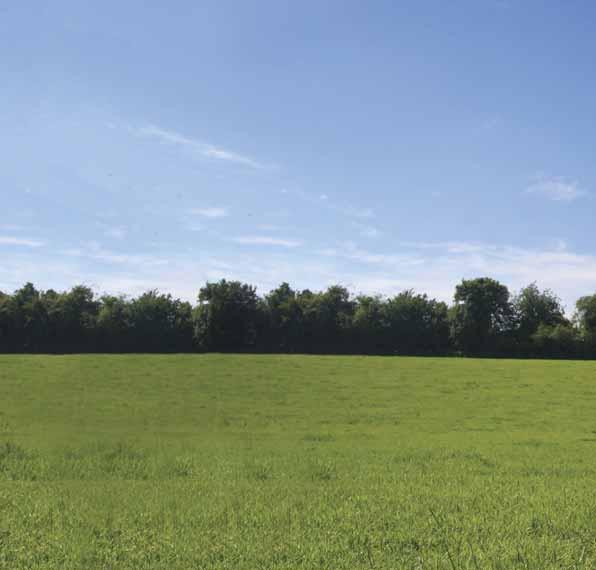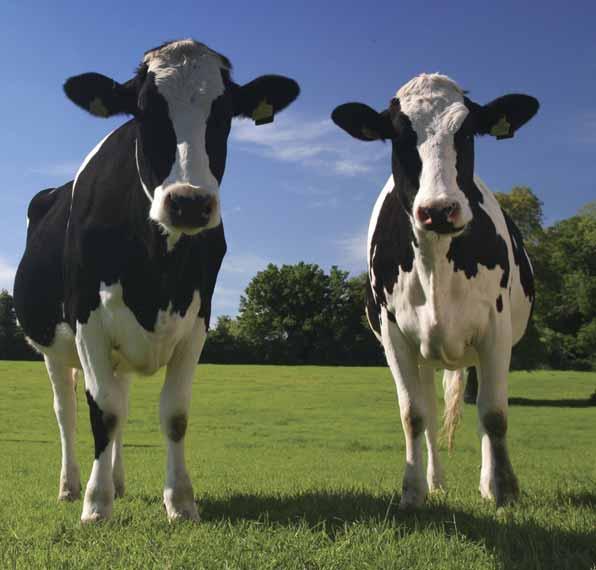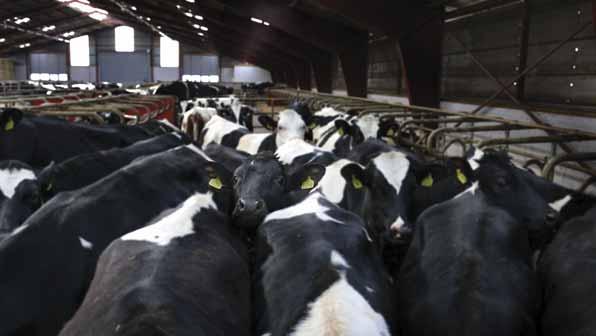
6 minute read
Practice
Lunchtime lecture
John Baines, dairy consultant
Advertisement
Automation key to dairy future
Automation is helping the dairy industry solve its most pressing crisis that of managing ever bigger herds with a dwindling number of staff. The extent to which dairy units have grown was highlighted by dairy consultant John Baines during a recent IAgrE Lunchtime lecture.

Between 1996 and 2018 the average English dairy herd grew from 78 cows to 151, while in Scotland the rise was from 105 to 194 head and in Wales 70 to 147.
Within those averages are 4,000 herds with less than 10 cows. These, he suggests, are hobby/house herds and not commercially viable, although they do distort the statistics. there are now over 1,000 in the UK, with some 200 herds above 500 head and 25 above 1,000.
Management needs automation
“It is very difficult to manage that kind of herd size without some degree of automation,” he said. Modern cow housing already included a lot of technology in terms of both design and equipment. And some of the newer ideas could help overcome the pressures faced by those managing modern herds. One key issue is that staff have far less time to ‘get to know’ cows than their predecessors did: “The guy sitting on the milking stool next to the cow was quite in tune with her mood and how she was feeling.”
By contrast, a milker in the parlour of a big herd might have only 10 seconds contact: “They know about the stars and the sinners. But they don’t know much about that huge population of cows in the middle”.
Practice:
Lunchtime lecture
Awash with milk data
While milking machines have been able to record multiple lines of data for some years, that was not always helpful: “Staff can end up drowning in data but starved of information.”
One area where it could really help is in monitoring cow behaviour around both conception and calving. The three main reasons dairy cows leave the herd are mastitis, lameness and failure to breed.
In relation to the last factor, he says technology could help overcome the problem in detecting oestrus in cows that are ready to breed. A cow only expresses oestrus for a few hours every few weeks – maybe even shorter in the winter – which can make it very hard for under‐pressure staff to spot, he said.
That was particularly true in modern, high‐capacity parlours where another challenge was effectively cooling the high volumes of milk produced.
Staff training
Staff working on such complex equipment needed proper training, he added, so incidents were avoided. Quoting Stelios (Haji‐Ioannau), the founder of EasyJet, he said: “If you think health and safety is expensive, try having an accident.”
Complex machines like rotary parlours come with a lot of technology, including control systems and IT to record information. One of the big challenges was that on a big rotary parlour the cow might only be in the operator’s field of vision for 30 seconds, and thereafter everything had to be monitored by the system. Modern milking stations can take a huge range of measurements relating to the cow, its weight, milk yield and the composition of that milk.
To minimise NOx emissions a very lean mixture is run (Lambda 3) of approximately 100 parts air: 1 part H2 by mass. To achieve this mix requires a larger than normal turbocharger which was evident when the engine was heard running. Whilst it had a softer detonation sound than its diesel counterpart, the turbo noise is more audible. As well as running engines on a test bed, a development engine has been installed in a backhoe loader and from a distance (and probably from the driver’s seat) you would be hard pressed to tell this machine from its conventional parent were it not for the striking paint job! No structural changes have had to be made to accommodate the new engine and the cooling pack is also the same.
The rise of the robots
Figures from the Milking Equipment Association (MEA) covering 2014 ‐2020 show that significantly more robotic milking systems have been installed than conventional parlours in those seven years. For instance, in 2019 there were over 180 robotic systems installed against fewer than 120 conventional parlours: “This is not novel or new technology. It is well established and bedded in.”
Mike Whi ti ng
Parlour telematics
A more recent advance was in the connectivity of the machinery and the ability to distil data and provide alerts to farm staff about which cows need attention: “We are also seeing the ability to use a telemetric approach to monitoring machine function, not just with robots but with those very large‐scale milking operations – it’s a true 24/7 operation.
“Many people involved in the arable sector know how important it is if the combine breaks down in the middle of harvest. Well every day is harvest on a dairy farm and down‐time is a catastrophe.” Technology transfer
Dairying had benefitted from a huge import of technology from other industries, such as the servo motors that power moving machine parts and systems that track all movements accurately.
Other innovations help the machine sense the cow and respond to its movements, so it can withdraw if she kicks out.
Cameras and 3D image analysis can provide information on a cow’s condition and weight that is superior to a weighbridge. Conventional weighing has the drawback that it is a single snapshot, when the cow’s weight naturally varies – typically by up to 30kg/day ‐ according to what she eats and drinks; how much milk she gives and how much she defecates.
Technology borrowed from the 3D gaming consoles meant farmers now had movement detectors that could reveal changes in activity.

This enables farmers to pinpoint when a cow is ready to breed; whether she is eating and ruminating and how much time she is either lying or standing.
For many dairy farmers who use robots the first sign that a cow is not well comes when she doesn’t visit it to milk. But before her milk yield is depressed she is likely to have laid down for longer – or in some instances have stood up more. Those changes in behaviour – which will be accurately recorded by the systems –are valuable data. Milk monitor
Individual milk recording has been offered for over 40 years, he said. But it had now progressed to measuring fat, protein and lactose ‘in line’, so the farmer can assess the efficiency of a cow’s diet in real time.
Among the newer technologies being developed was ‘Milk amyloid‐a’ monitoring, which provides a very early marker of disease.
Breath monitoring – which was examined as a way of detecting cows with ketosis – is now being investigated as a way of monitoring cows for their methane emissions.
Still room for the stockman
For all their capabilities, there was a significant list of tasks that an automated milking system cannot do:
“There are quite a lot of things for which we still need a good stockman. For instance, we still need to be able to formulate rations and know what to do with sick cows. Above all the whole purpose of high tech is to direct us to those cows that need attention.”
Watch again
Don’t forget that the Lunch琀me Lectures are available to watch on the IAgrE’s youtube channel:
h琀ps://bit.ly/3kpKVF8










